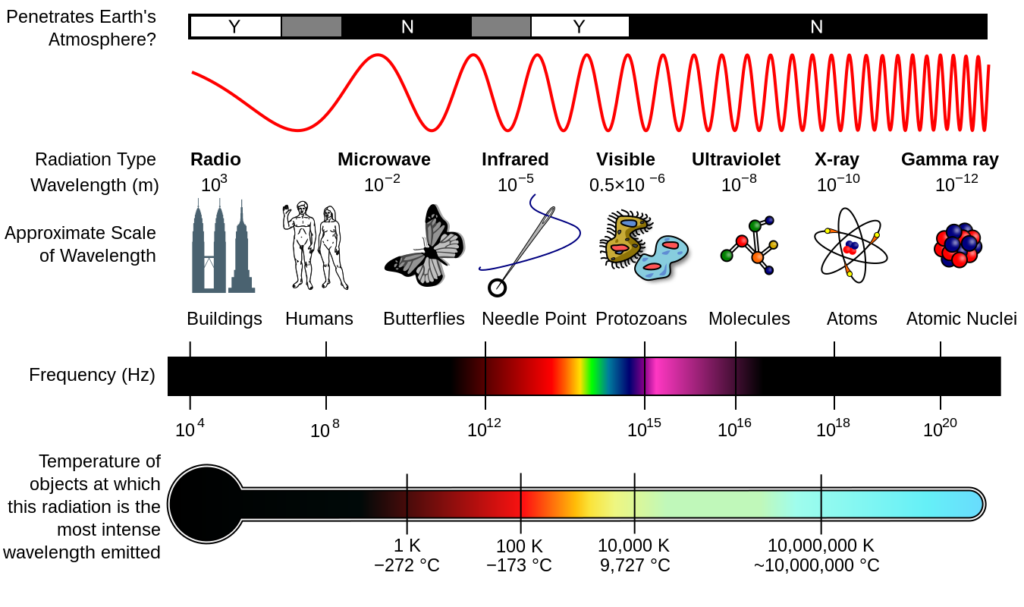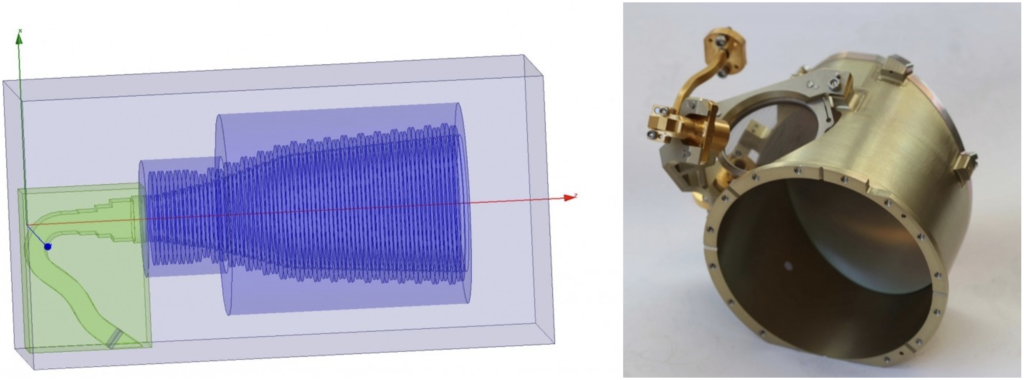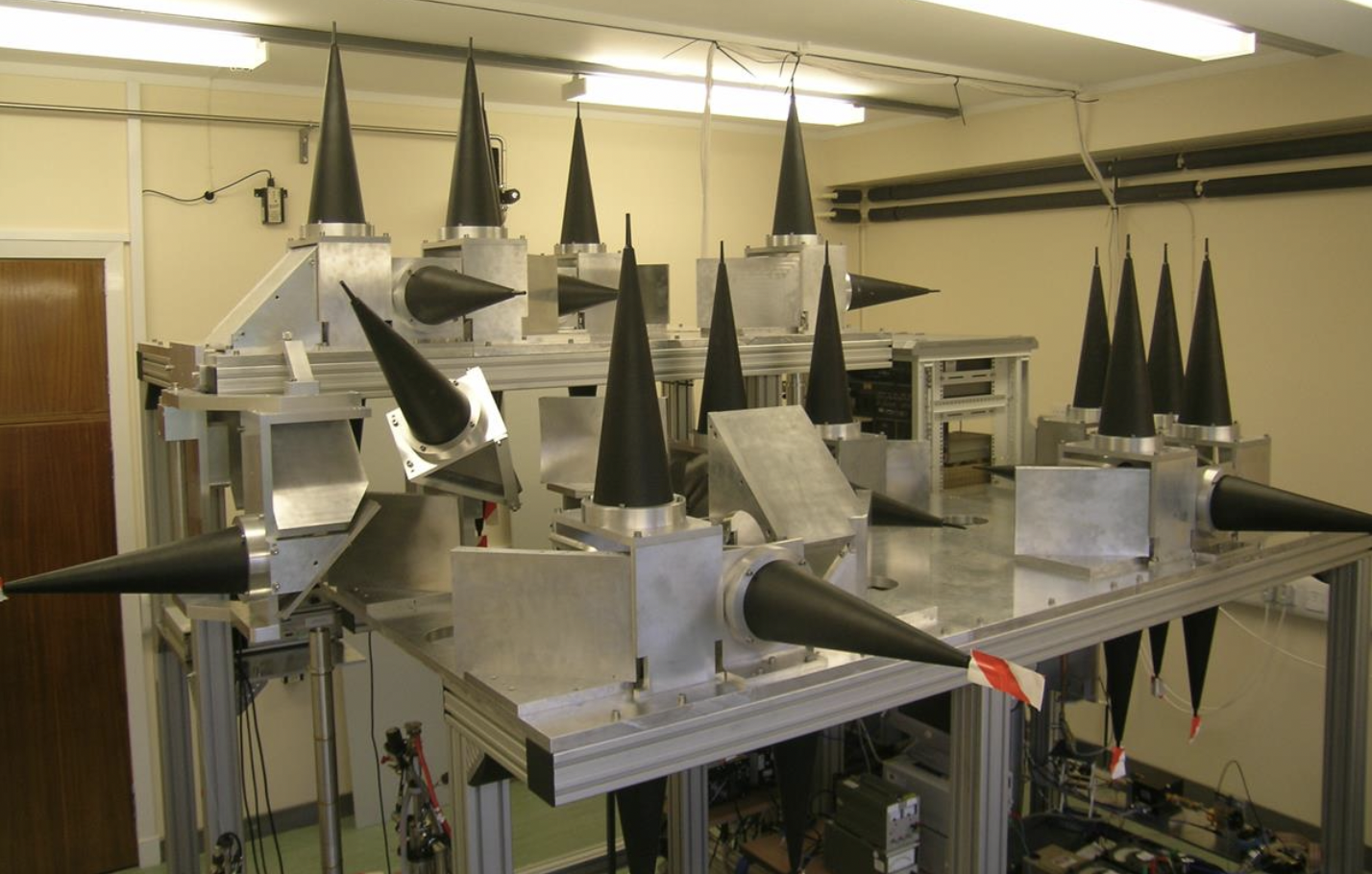We are surrounded by many different types of electromagnetic radiation, characterised by the frequency with which electric and magnetic fields oscillate as they travel through space. We are all familiar with RF and microwaves, which are relatively low frequency electromagnetic waves commonly used in communication devices such as radios or mobile telephones. As we go up in frequency, we eventually reach infrared radiation which we experience as heat, then optical radiation, then X-rays, and eventually gamma-rays commonly associated with medical diagnostics. Sandwiched in between microwaves and infrared lies the millimetre wave part of the spectrum. This is a much less well-known area but has already found many applications across science and technology. These high frequency microwaves are commonly used in airport security screening, satellite communications, remote sensing and weather forecasting, magnetic resonance, next generation mobile telephone networks, astronomy, as well as automotive and other high-resolution radars.

Many of these applications require high performance antennas that direct or receive the radiation in well-defined high-quality beams. This is particularly critical in line-of-sight communications, high resolution radar, atmospheric and spectroscopy (materials characterisation). In satellite applications the compactness and weight of the antenna are also critical.
In the School of Physics and Astronomy, Professor Graham Smith’s work has resulted in the development of a wide variety of high-performance corrugated feedhorn antennas, that have been commercialised by their industrial partner, Thomas Keating Ltd, and are now used worldwide, from South Korea to the US and throughout Europe.
The team’s first high performance feedhorn designs were originally developed for magnetic resonance applications, and subsequently marketed under the ‘ultra-Gaussian’ moniker. However, they have since been incorporated into multiple radar, spectroscopy and materials characterisation systems across the world. The team then developed more compact designs, which are particularly attractive for micro-satellites, where physical constraints often render larger antenna designs impractical.
This compact design methodology was applied to the challenging requirements for a NASA-funded quad-band radiometer instrument flown on the MIT Lincoln Lab CubeSat mission called TROPICS (Time-Resolved Observations of Precipitation Structure and Storm Intensity with a Constellation of Smallsats). The instrument is designed to measure the mm-wave radiation naturally radiated or reflected from storm clouds. This small constellation of six miniature satellites is designed to offer continuous real-time monitoring of tropical cyclones – an umbrella term that includes hurricanes, typhoons and tropical storms. The antenna design uses a pair of miniature dual-band horns to illuminate a small reflector antenna within the tight physical constraints of the 10x10x10 cm cube modules that make up the CubeSat form factor. The mission objective is to provide rapid-refresh microwave measurements over the tropics that can be used to observe the thermal workings of the lower atmosphere and the changing precipitation structure for storm systems over their lifecycle. News of the mission can be found on the MIT Lincoln Lab pages.

A single Pathfinder satellite was launched on June 30th 2021 and is now gathering initial data on tropical storms and hurricanes. One of its first targets was Hurricane Ida, which hit the Gulf of Mexico in late August 2021 – first light microwave imagery from Pathfinder can be seen on the NASA website. NASA has now selected Rocket Lab USA Inc. to launch a further two pairs of satellites in late Spring 2023.


